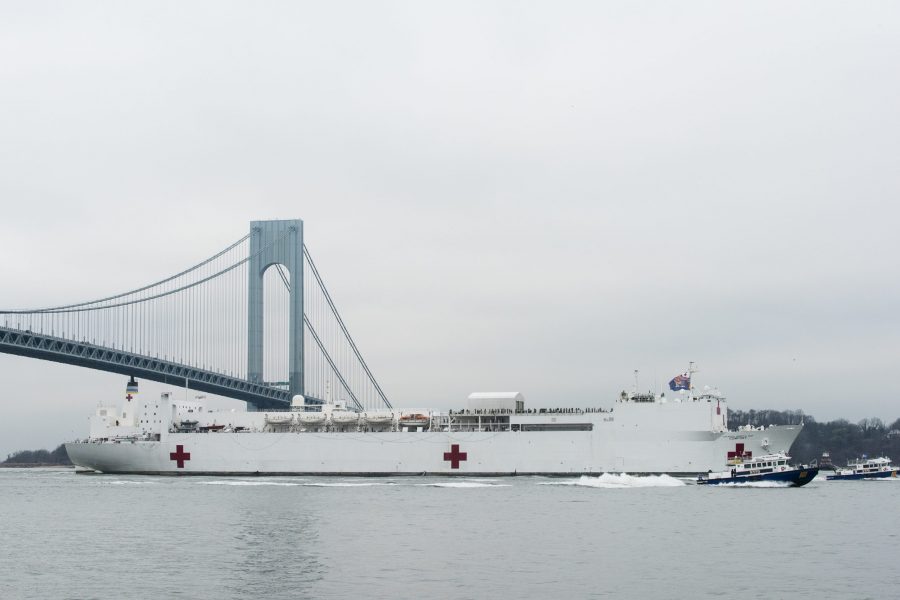The Defense Department may move its medical personnel from the New York area to other facilities or parts of the country that are hardest hit by the coronavirus pandemic because of lower-than-expected demand.
DOD has provided military employees to 11 civilian hospitals around New York City, as well as on the USNS Comfort hospital ship docked nearby, and at the city’s Jacob K. Javits Convention Center. They intended to treat trauma and emergency care patients that hospital staffs could not handle at the same time as coronavirus patients, as well as lighten the load of people suffering from the COVID-19 illness.
But as the Javits and Comfort locations see fewer patients than projected, and medical needs ramp up in places like New Orleans, Detroit, and Texas, the military could shift its expertise elsewhere. It is working with the Centers for Disease Control and Prevention on those decisions.
“What we’ve found is, while the civilian hospitals are getting to capacity, what they really need is they need that extra manpower, the extra staffing,” Assistant Secretary of Defense for Health Affairs Thomas McCaffery said at an April 10 briefing. “To date, we’ve already put in close to 400 doctors, nurses, respiratory therapists, in New York City hospitals. … We’ve got another tranche going.”
The Navy’s Comfort offers 500 beds and the Javits—typically a premiere conference space now assisted by the Army—offers 1,000 beds. NPR reported April 9 that the caseload at the Javits had grown to 189 patients that day, and the Comfort was treating 53 patients.
After announcing April 7 that the military had started accepting patients at the two satellite hospitals, DOD could consider moving its medical personnel from the Javits Center and the hospital ship into brick-and-mortar hospitals to supplement stretched-thin staffs instead.
The New York Post reported April 9 the two field locations are seeing a smaller influx of people in part due to stringent requirements that hospitals need to meet to send patients to those facilities, while hospitals themselves remain swamped.
DOD officials say the numbers are a result of stay-at-home orders and other measures that are driving down coronavirus-related demand, as well as shrinking the number of trauma and ER visits that hospitals normally see.
Some communities have a shortage of personnel to run medical facilities, instead of running low on facility space itself, McCaffery said.
“I wouldn’t say that the states got it wrong. I would say that the states were doing good due diligence and planning and anticipating and, rather than being in a situation where they need that capacity and it’s not there, I would much rather have it ready to go,” he said. “If we need to reposition it somewhere else, I think that’s a far superior position to be in than not have the capacity and there be an extreme need for it.”
As of noon on April 8, the USNS Mercy in Los Angeles had also treated 31 patients for ailments other than COVID-19 and released 18 of them, according to the New York Times. It is acting in a similar role as the Comfort for the West Coast.
